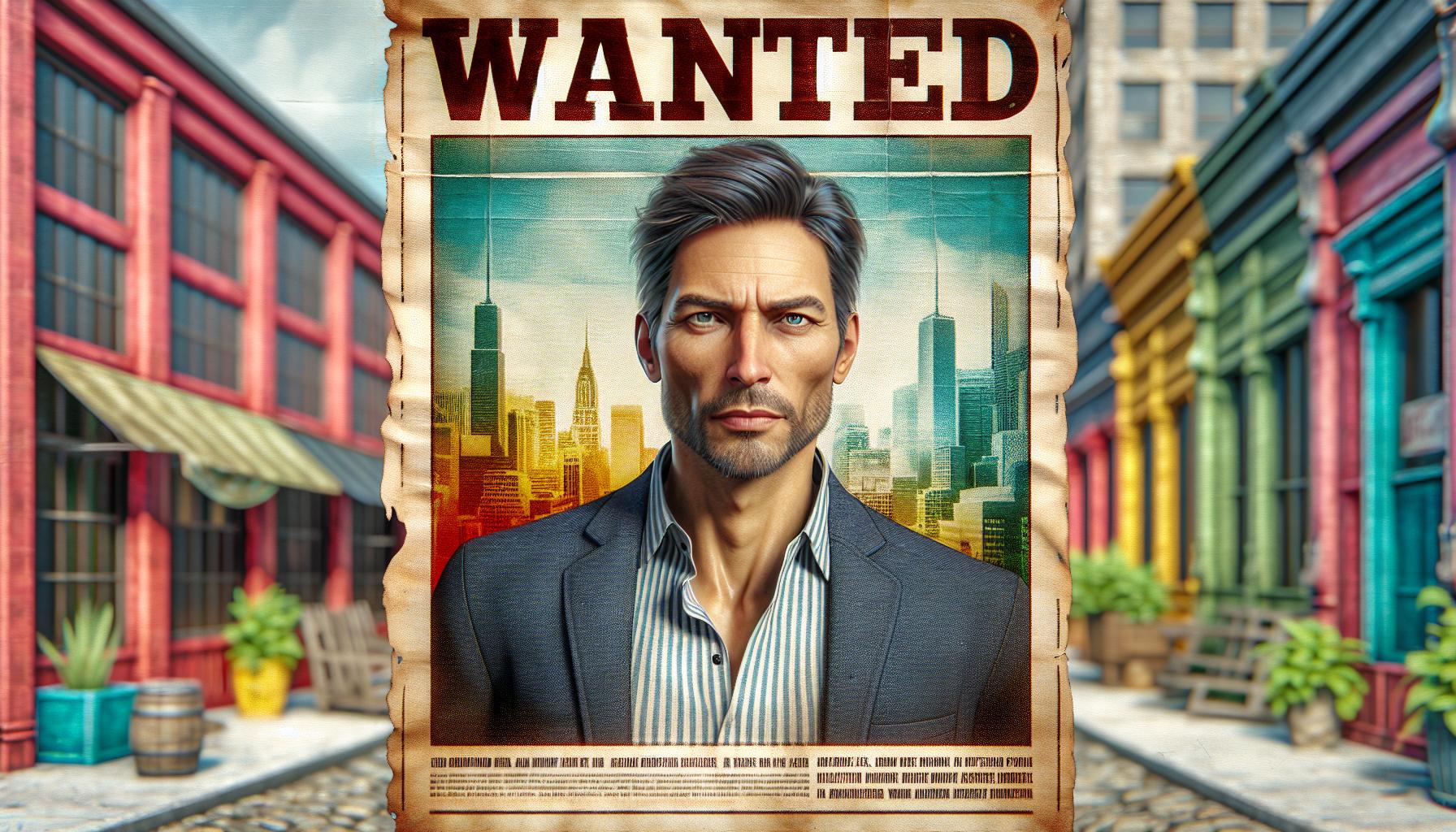In the digital age, the concept of a wanted poster has evolved beyond the traditional paper format. I’ve stumbled upon a fascinating example: the “background:2ys7ytc9kmu=” wanted poster. This unique digital artifact not only captures attention but also raises questions about identity, justice, and the role of technology in our lives.
As I explored this intriguing piece, I realized it reflects a blend of art and social commentary. It’s not just about capturing a fugitive; it’s about how we perceive and interact with the world around us. Join me as I dive deeper into the significance of this modern wanted poster and what it reveals about our society today.
Key Takeaways
- The “background:2ys7ytc9kmu=” wanted poster exemplifies the fusion of art and technology, reshaping how society engages with themes of identity and justice.
- It integrates traditional wanted poster elements with modern design techniques, capturing attention and encouraging critical analysis of societal perceptions.
- The poster serves as a digital artifact that stimulates public dialogue on topics like morality, digital surveillance, and personal responsibility.
- Historical context reveals the evolution of wanted posters from rudimentary sketches in the 17th century to sophisticated digital graphics seen today.
- Its impact on culture is significant, inspiring various artistic interpretations and sparking discussions about the implications of labeling individuals as criminals.
- Public reception highlights diverse opinions on justice and morality, showcasing the poster’s role in challenging societal norms and fostering community conversations.
Background:2ys7ytc9kmu= Wanted Poster
The background:2ys7ytc9kmu= wanted poster exemplifies the intersection of art and technology in today’s digital landscape. This modern artifact represents more than just a call for information; it challenges viewers to consider broader themes such as identity and societal perceptions of justice.
The design of this poster incorporates vibrant visuals and innovative typography, making it visually striking. It blends traditional elements of wanted posters with contemporary design techniques, attracting attention and engaging audiences in unique ways.
Digital mediums, including social media platforms, amplify the reach of the background:2ys7ytc9kmu= wanted poster. The poster’s distribution encourages public participation in discussions about morality and justice, fostering a community dialogue around the implications of digital surveillance and personal privacy.
Additionally, the poster invites reflections on the role of the viewer in society. By repurposing the familiar concept of a wanted poster, it creates a space for critical analysis, prompting questions about how media influences our understanding of individuals labeled as outcasts or criminals. This encourages deeper conversations about personal accountability and societal responsibility in addressing issues of justice.
Historical Context

Wanted posters have a rich history, evolving significantly from their origins to modern iterations like the background:2ys7ytc9kmu= wanted poster. Understanding this context sheds light on their role in society and cultural perceptions.
Origin of Wanted Posters
Wanted posters trace back to the 17th century. Law enforcement agencies used these documents to inform the public about criminals and fugitives. The iconic example, “Wanted: Dead or Alive,” emerged in the American West, often featuring sketches and descriptions of outlaws. Community involvement became essential; the public’s assistance in apprehending fugitives often influenced the outcome of many criminal cases.
Evolution of Design
Design of wanted posters has progressed from rudimentary sketches to sophisticated digital graphics. Initially, they featured hand-drawn images, simplistic fonts, and limited color palettes. Modern wanted posters, such as the background:2ys7ytc9kmu= wanted poster example, incorporate vibrant graphics, advanced typography, and digital art techniques. This transformation mirrors advancements in technology and shifts in societal aesthetics, encouraging engagement and interaction while retaining the core purpose of alerting the public about criminal activity.
Analysis of Background:2ys7ytc9kmu= Wanted Poster

The background:2ys7ytc9kmu= wanted poster serves as a profound visual and textual artifact, encouraging viewers to delve into its layered meanings. Through its design and messaging, it prompts viewers to reflect on broader societal themes.
Visual Elements
Visual elements play a crucial role in the impact of the background:2ys7ytc9kmu= wanted poster. The use of vibrant colors and bold typography creates immediate attention. Innovative design techniques blend traditional wanted poster features with modern aesthetics, making it visually engaging. High-resolution imagery captures details that evoke emotion and curiosity. This combination of art and technology heightens the overall message, compelling viewers to reflect on the subject’s identity and the implications of being labeled as a fugitive. The choice of background imagery also subtly comments on societal views, adding depth and context to the visual narrative.
Text and Messaging
Text and messaging within the background:2ys7ytc9kmu= wanted poster resonate powerfully with audiences. The language employs urgency and directness, creating a call to action that demands attention. Key phrases highlight themes like justice, identity, and moral responsibility, challenging viewers to question societal norms. The inclusion of poignant statistics or facts can further ground the message in reality, emphasizing the consequences of labeling individuals as criminals. Captivating messaging not only informs but also engages, inviting discussions about the complexities surrounding criminalization and personal accountability in an increasingly digital world.
Impact on Culture and Society

The background:2ys7ytc9kmu= wanted poster has fostered significant cultural dialogues and societal reflections. It embodies the intersection of technology, artistry, and public consciousness.
Influence on Pop Culture
The background:2ys7ytc9kmu= wanted poster permeates pop culture, appearing in various artistic mediums, from graphic novels to digital art installations. Its design elements inspire artists, who adapt its themes of justice and identity into their works. Fashion designers utilize the poster’s aesthetics in clothing lines, blending crime narratives with contemporary runway styles. Additionally, social media memes leverage its imagery to comment on societal issues, reinforcing the poster’s role as a cultural artifact that engages diverse audiences.
Reception by the Public
The public’s reception of the background:2ys7ytc9kmu= wanted poster varies widely, revealing deep-seated sentiments about justice and morality. Some individuals appreciate its artistic boldness and the conversations it ignites, while others express concerns about surveillance and the implications of labeling individuals as criminals. Community forums often emerge to debate these issues, illustrating the poster’s ability to provoke thought and challenge societal norms. This dialogue showcases how a modern wanted poster can transcend its original purpose, inciting discussions on accountability and the complexities of contemporary justice.
Testament To How Art And Technology Can Converge
The background:2ys7ytc9kmu= wanted poster stands as a testament to how art and technology can converge to spark meaningful conversations. It pushes us to reflect on our roles in shaping societal views on justice and accountability.
As I delve deeper into this digital artifact, I’m reminded of the power of visual storytelling in influencing public perception. The vibrant design and compelling messaging not only capture attention but also challenge us to think critically about the complexities of morality in our digital age.
This modern interpretation of a wanted poster encourages ongoing dialogue and engagement, making it a significant piece in understanding contemporary justice and identity. It’s fascinating to see how something that began as a simple call for information can evolve into a catalyst for cultural reflection.

